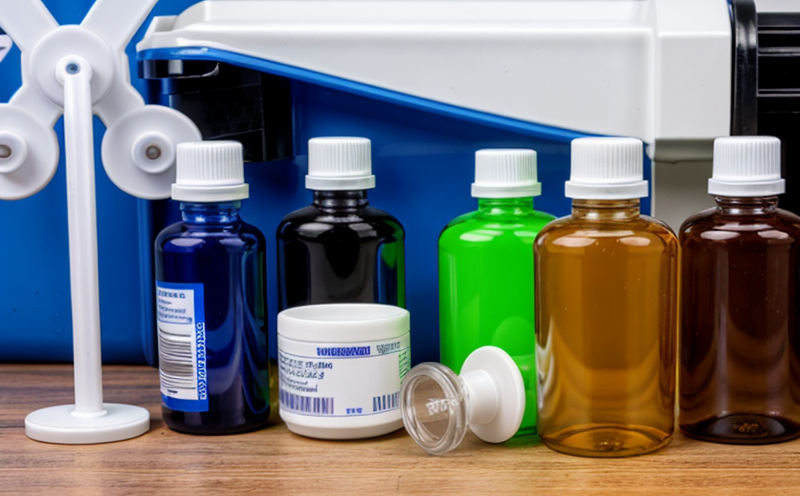ASTM D8292 PCBs in Healthcare Waste
The ASTM D8292 standard is a critical tool for the environmental sector, particularly when it comes to managing waste from healthcare facilities. This test method focuses on determining the presence and concentration of polychlorinated biphenyls (PCBs) in medical and pharmaceutical waste streams, which are often challenging due to their complex composition.
Healthcare facilities generate a wide variety of wastes that can contain PCBs, including discarded electronic devices, certain pharmaceutical products, and even some types of packaging. These materials are not only hazardous but also subject to stringent regulations regarding disposal and recycling. ASTM D8292 provides a standardized approach for quantifying PCB concentrations in these waste streams, ensuring compliance with regulatory requirements.
The test procedure involves several steps that must be followed rigorously to ensure accurate results. The first step is the proper sampling of the waste material. This requires careful selection and preparation of representative samples to avoid bias or contamination. Once collected, the samples are typically digested using a solvent extraction process to release any PCBs present in the matrix.
The extracted compounds are then analyzed using gas chromatography with mass spectrometry (GC-MS), which is one of the most precise methods for detecting and quantifying PCB congeners. The results from this analysis provide valuable insights into the composition of the waste, helping environmental managers make informed decisions about disposal or recycling.
Compliance with ASTM D8292 is essential not only to meet regulatory requirements but also to protect public health and the environment. By accurately identifying and quantifying PCBs in healthcare waste, facilities can minimize their release into the ecosystem, reducing potential risks associated with these persistent organic pollutants (POPs).
The standard's application extends beyond mere compliance; it plays a crucial role in sustainable waste management practices. Through detailed analysis of waste streams, healthcare providers can identify opportunities for recycling and reusing materials that do not contain significant amounts of PCBs.
Moreover, the data collected through ASTM D8292 testing can inform policy-making at both local and national levels, driving the development of more effective waste management strategies. By understanding the true nature of healthcare waste, stakeholders can advocate for safer handling practices and more environmentally friendly disposal options.
Applied Standards
| Standard Number | Title | Description |
|---|---|---|
| ASTM D8292-16 | Standard Test Method for Determination of Polychlorinated Biphenyls (PCBs) in Medical and Pharmaceutical Waste Streams by Extraction and Gas Chromatography with Mass Spectrometry Detection | This standard specifies the procedures for determining PCB concentrations in waste streams from healthcare facilities. It covers sample preparation, extraction methods, instrumental analysis using GC-MS, and data reporting. |
| ISO 15267-3 | Environmental Management - Waste Management - Part 3: Measurement of Polychlorinated Biphenyls (PCBs) | This international standard provides a framework for measuring PCB concentrations in various types of waste, including healthcare-related materials. It complements ASTM D8292 by offering broader applicability across different industries. |
| EN 14573-2003 | Environmental Protection - Determination of Polychlorinated Biphenyls (PCBs) in Waste Streams from Electrical and Electronic Equipment | This European standard focuses on PCB concentrations specifically within electrical and electronic waste streams, which may overlap with healthcare waste. It provides a complementary approach to ASTM D8292. |
Quality and Reliability Assurance
The quality of the data generated by ASTM D8292 testing is paramount for ensuring reliable decision-making in waste management. To maintain high standards, laboratories performing these analyses must adhere strictly to the prescribed protocols outlined in the standard.
Critical aspects include:
- Sample Preparation: Proper handling and preparation of samples are essential to avoid contamination or loss of PCBs. This involves using appropriate containers, minimizing exposure to air, and ensuring that all necessary steps are followed.
- Extraction Efficiency: The efficiency of the extraction process directly impacts the accuracy of the results. Laboratories should use reliable solvents and optimize conditions for maximum recovery rates.
- Instrument Calibration: Regular calibration of instruments such as GC-MS is crucial to ensure accurate detection and quantification of PCBs.
- Data Interpretation: Skilled analysts are required to interpret the complex data generated by these analyses, ensuring that all relevant congeners are identified and reported correctly.
By adhering to these quality assurance practices, laboratories can provide reliable data that supports informed decision-making in waste management. This not only enhances compliance with regulatory requirements but also promotes sustainable practices within the healthcare sector.
Use Cases and Application Examples
The application of ASTM D8292 is broad and varied, touching on numerous aspects of waste management and recycling in healthcare settings. Here are some specific use cases:
- Facility Audits: Hospitals and clinics often conduct internal audits to ensure compliance with environmental regulations. ASTM D8292 testing is a key component of these audits, providing concrete data on PCB concentrations in waste streams.
- Recycling Programs: By identifying which materials can be safely recycled without introducing significant amounts of PCBs, facilities can enhance their recycling programs, reducing landfill contributions and promoting resource recovery.
- Vendor Selection: Healthcare organizations may use ASTM D8292 results to evaluate the environmental practices of waste management vendors. This ensures that only compliant and responsible partners are selected for handling their hazardous waste.
- Regulatory Compliance Reporting: Governments require healthcare facilities to report on their waste management practices, including PCB concentrations in various streams. ASTM D8292 testing supports these reporting obligations by providing accurate data.
- Educational Initiatives: The results from ASTM D8292 can be used to educate staff and stakeholders about the importance of proper waste handling and disposal methods.
- Research and Development: R&D teams within healthcare facilities use ASTM D8292 data to explore innovative ways of managing PCB-containing waste, potentially leading to new recycling technologies or alternative disposal methods.
In addition to these direct applications, the insights gained from ASTM D8292 testing contribute to a broader understanding of how healthcare waste impacts environmental health. This knowledge is vital for developing more sustainable practices and policies across the industry.





